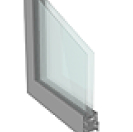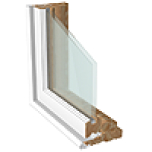
Window Frames
What are Window Frames?
Window frames are structural components that provide support and structure to windows, holding the glass panes in place and facilitating their installation within a building’s openings. These frames are crucial for both the aesthetic and functional aspects of windows, contributing to the overall design of a structure while also helping to maintain energy efficiency. Window frames can be constructed from various materials, including wood, aluminum, vinyl, and fiberglass, each offering unique advantages in terms of durability, maintenance, and insulation properties. The choice of window frame material can impact factors such as thermal efficiency, resistance to weather elements, and overall longevity. Additionally, window frames play a role in securing the window components and can be designed to accommodate various styles, such as sliding, casement, or double-hung windows.

Metal Frames and Metal Frames with Thermal Break
Aluminum window frames are light, strong, durable, and easily extruded into the complex shapes required for window parts.

Non-metal Frames and Non-metal Frames with Thermal Break
There is a variety of non-metal framing materials for windows including, wood, wood with metal/vinyl cladding, vinyl, hybrid, and composites.
Read the related blog about window frames types here.
Does frame material type matter?
The material used to manufacture the frame governs the physical characteristics of the window, such as frame thickness, weight, and durability. It also has a major impact on the thermal characteristics of the window. The window U-factor, as given on the NFRC certified rating or label, incorporates the thermal properties of both the frame and the glazing. Since the sash and frame represent from 10–30% of the total area of the window unit, the frame properties significantly influence the total window performance.